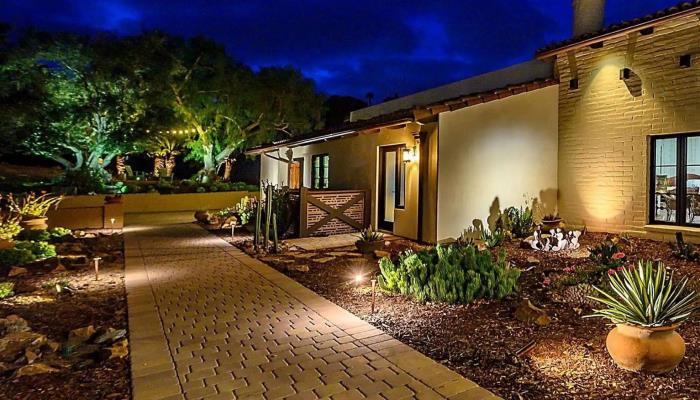How To Place Garden Lights?

Garden lights do not just remove darkness from outside doors. They also add ambiance and beauty to gardens, pathways, and outdoor living areas. Placing garden lights correctly is vital. It makes them work better and makes your landscape look splendid. In this full guide, we will explore exceptional practices and strategies. These will help you put garden lighting to make lovely effects. They will also enhance safety and security in your outdoor space.
Let’s explore now to learn more
Understanding Garden Lighting
Before we cover how to add lighting to a garden, you must understand its many types and purposes.
- Task Lighting: Task lights illuminate specific areas. They are for real purposes. They light paths, stairs, and outdoor cooking areas. These lights are often bright and directional. They give enough light for safe navigation and mission performance.
- Accent Lighting: These fixtures highlight focal points or architectural features in the lawn. These features include bushes, sculptures, and water. The lights are low-voltage. They are placed to create visible drama and interest in the landscape.
- Ambient Lighting: It gives average light. It creates a warm and inviting atmosphere in outdoor areas. These lights are usually soft and diffused. They improve the mood and feel of the garden without being too strong.
Four. Security Lighting: It deters intruders and improves safety. It does this by lighting dark regions and entry points around belongings. The lights are usually bright and motion-activated. They add security and peace of mind.
Determining Lighting Goals
Before installing garden lighting, you must find your lighting dreams and goals. Consider the subsequent factors:
- Functionality: Determine the main feature of the lawn lights. Is it to light paths, highlight landscapes, or beautify protection?
- Consider the favored aesthetic impact. It includes making a relaxed atmosphere for outside spaces. Or, it means accentuating key factors of your garden layout.
Three. Evaluate potential safety risks in your outside area, like choppy terrain, steps, or dark corners. Give priority to light answers to fix these issues.
- Choose energy-efficient lighting fixtures. They can be LED or solar-powered. They use less power and are better for the environment.
Placement Tips for Garden Lights
Now that you’ve hooked up your lights desires, let’s explore a few recommendations and techniques for putting garden lighting efficiently:
- Highlight Key Features: Identify focal factors or critical capabilities in your lawn, which include specimen flowers, architectural factors, or lawn embellishes, and use accessory lighting fixtures to spotlight those areas. Position lights at ground degree or mount them on close-by systems to create dramatic outcomes and draw interest to the focus.
- Illuminate Pathways: Use project lighting to brighten pathways, walkways, and lawn borders. It enhances safety for foot traffic. Place lighting at ordinary periods alongside the course, ensuring good enough insurance and uniformity of light distribution. Opt for low-degree course lighting or bollard lighting to decrease glare and create a gentle, inviting glow.
Three. Create Depth and Dimension: Use a mixture of uplighting and downlighting techniques to create depth and measurement in your garden landscape. Uplights positioned at the bottom of bushes, shrubs, or architectural capabilities can cast dramatic shadows and accentuate texture and shape. Downlights are installed on overhead structures, like pergolas or trellises. They offer mild light and make a cozy space.
- Layer Lighting Effects: Layer exclusive sorts of lawn lighting to achieve layered lighting fixture results and beautify visible interest. Combine ambient lighting fixtures with accessory lighting to create a warm and inviting environment, or combine security lighting with project lights to improve protection and deter intruders. Experiment with unique light fixtures, wattages, and beam angles to acquire the favored lighting consequences.
- Consider Proximity to Power Sources: When planning the position of garden lights, remember the proximity to strength sources, including electrical outlets or outside sockets. Choose lights that are well-suited to your current electrical infrastructure and ensure that wiring is installed competently and discreetly to avoid tripping hazards or harm to landscaping.
- Optimize Light Distribution: Pay interest to the directionality and beam spread of garden lighting fixtures to optimize mild distribution and reduce glare. Angle lighting away from seating areas or windows to save you direct glare and create a snug viewing reveal. Experiment with exceptional mounting heights and angles to attain the preferred lighting fixture effects while minimizing light pollution and trespass.
- Test Placement Before Installation: Before permanently putting in garden lighting fixtures, test with distinct placement alternatives and configurations to find the most visually attractive and powerful layout. Use brief lighting fixtures solutions and portable stake lighting fixtures or string lighting to simulate the desired lighting results and make adjustments as needed. Once you are glad about the placement, proceed with everlasting installation following producer suggestions and safety precautions.
Learn More: Advanced Tips for Garden Lighting
For advanced tips and strategies for garden lighting fixture design, consult our comprehensive resource. Explore creative thoughts for incorporating lights controls, shade-changing LEDs, and smart lighting fixtures technologies into your garden layout. Whether you are a amateur gardener or a seasoned landscaping expert, our professional insights will assist you create breathtaking outside lights presentations that enhance the beauty and capability of your outdoor space.



